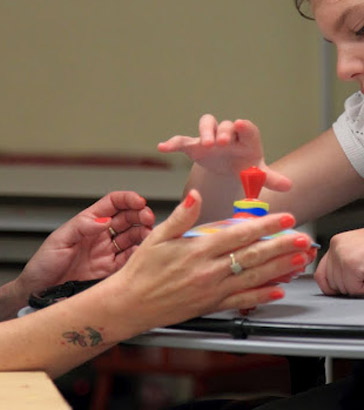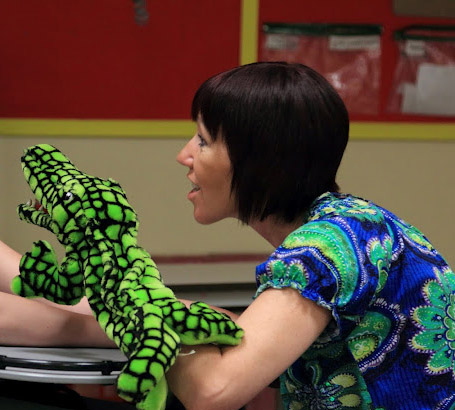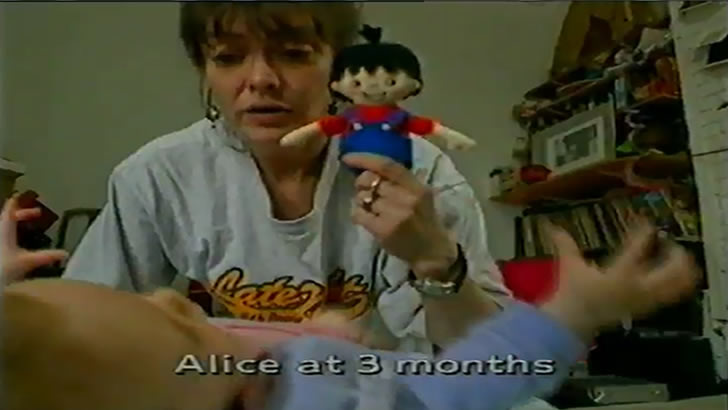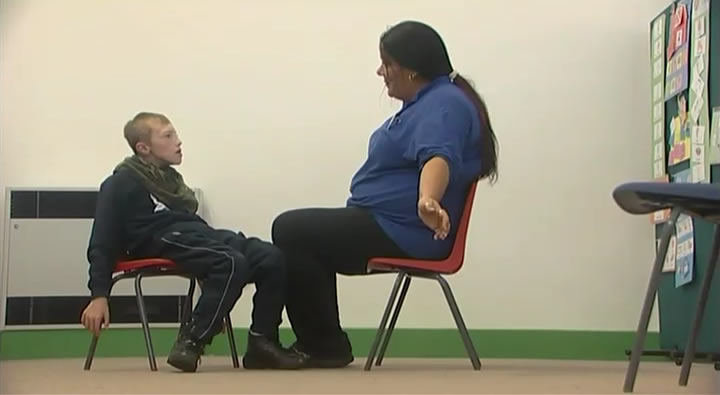Watch this clip showing the interaction between a parent and baby.
Look out for:
- The way in which the infant is an active contributor;
- The way in which spontaneous vocalisations and responses are intuitively reinforced and built upon by the caregiver;
- The positive attitude of both participants; and
- The way in which the interaction is made inherently pleasurable – clear messages are given that the child is valued.
Now watch the clip of an interaction between Lesley, a teaching assistant, and Callum, a child with PMLD still developing the fundamental elements of communication.
Notice the similarities with the early interaction between the parent and child that you watched on the previous screen.
Notice how Lesley engages Callum without 'babying' him in her tone of voice or her expectations.

Pre-verbal exchanges with parents in infancy are the foundations for language development and conversation.
Early communication skills established during these earliest interactions include:
- Taking turns;
- Eye contact;
- Monitoring gaze; and
- Timing utterances.
Over 80% of everyday communication is estimated to be non-verbal, so gaining these skills is very important.
Look at this video clip in which Lesley interacts with another child at the earliest stages of communication.
Notice how, through the way she interacts with Jordon, Lesley is helping him to acquire the early communication skills listed on the previous screen.

When parents engage with very young children they instinctively exaggerate their facial expressions to make their meaning clear.
Children with learning difficulties, in the early stages of communication, need a consistent model of appropriate body language. Staff should make sure that their facial expression, intonation and body language support what they are saying to children.


